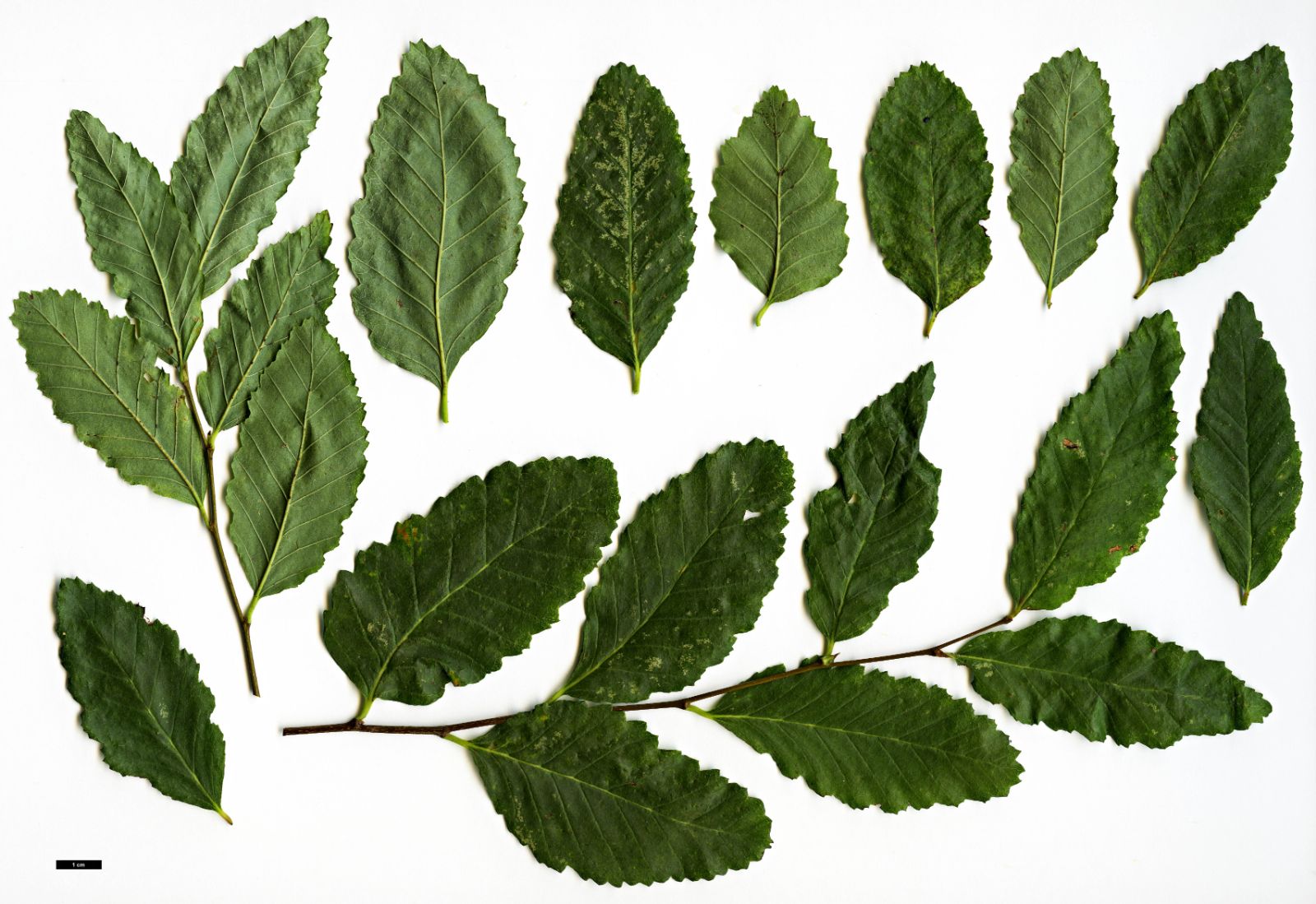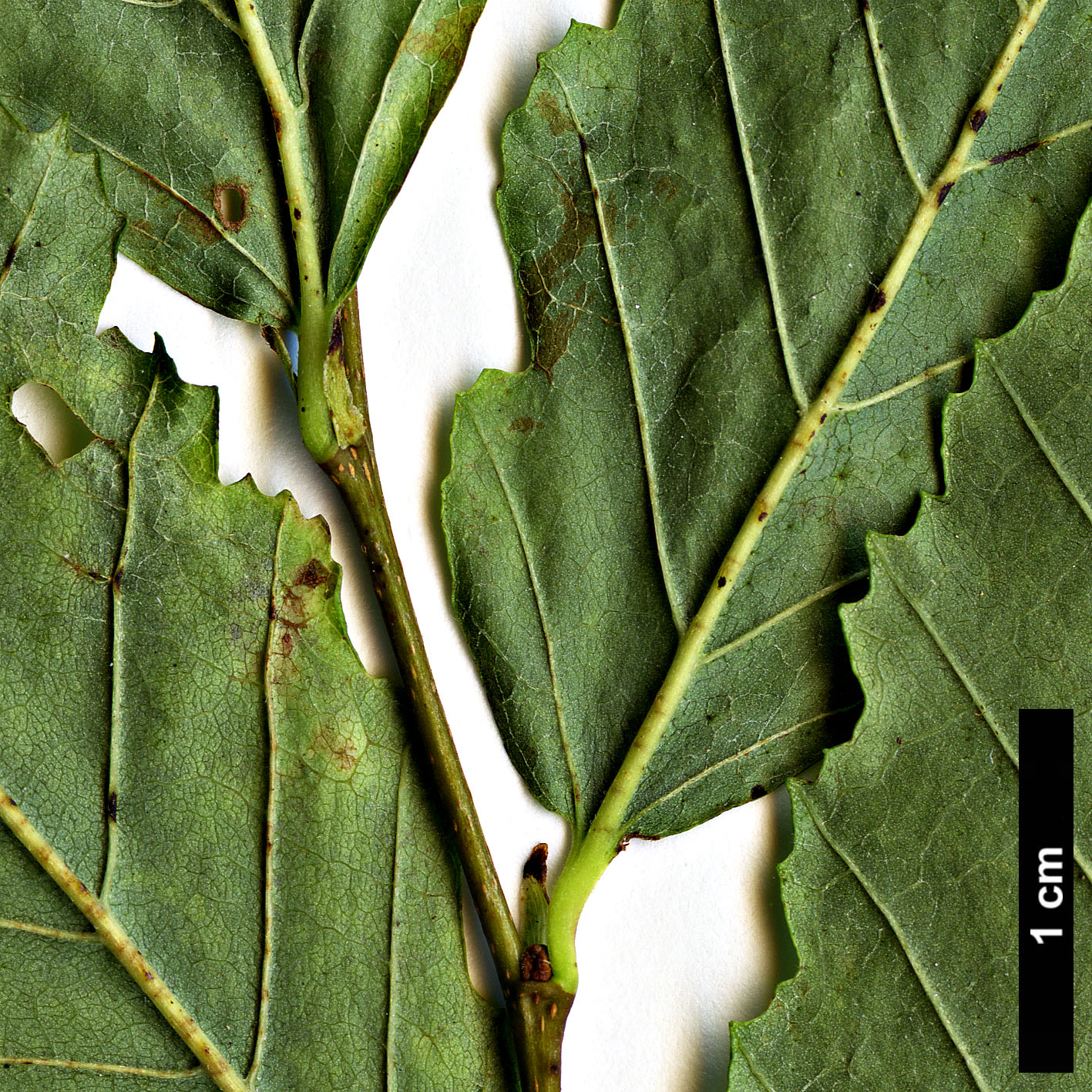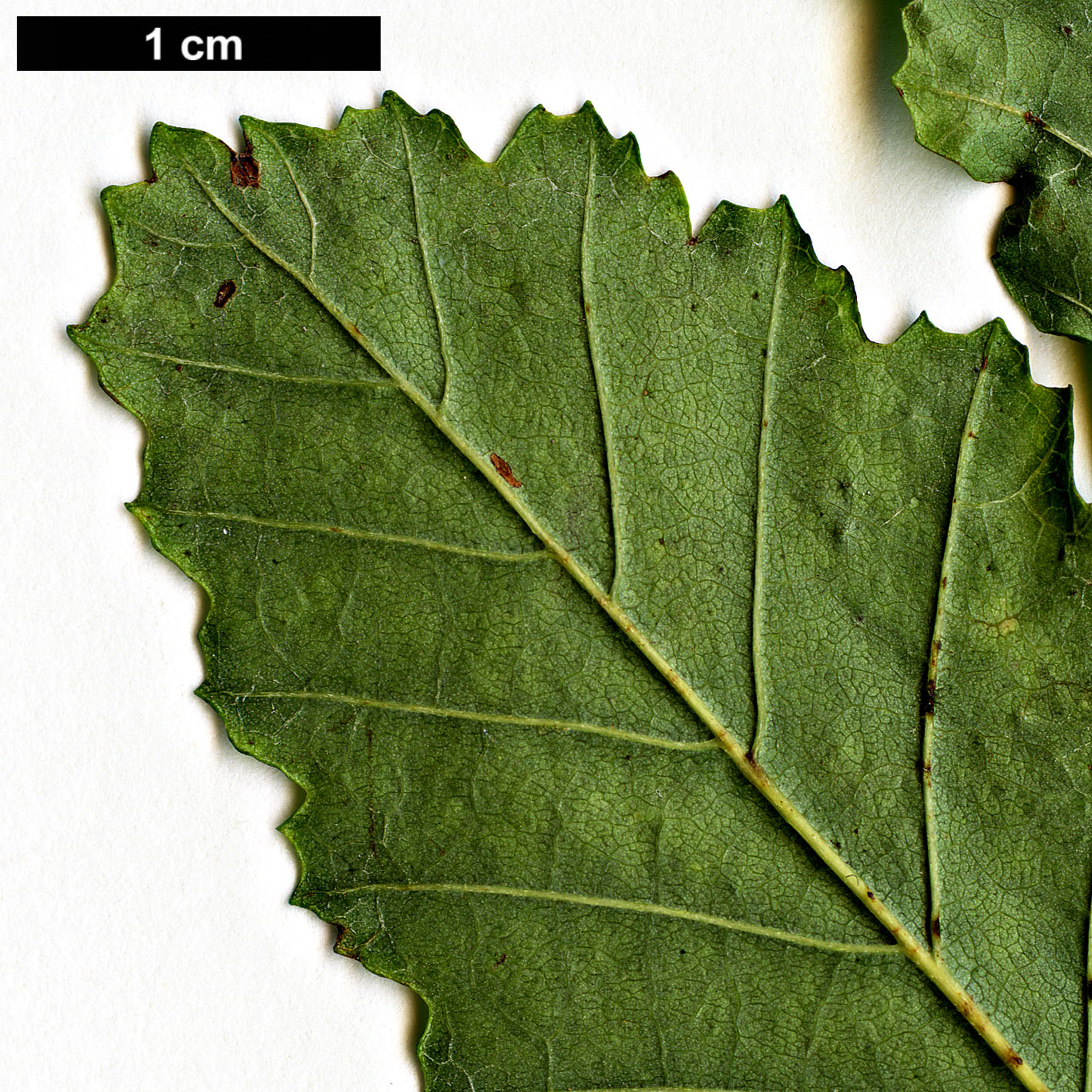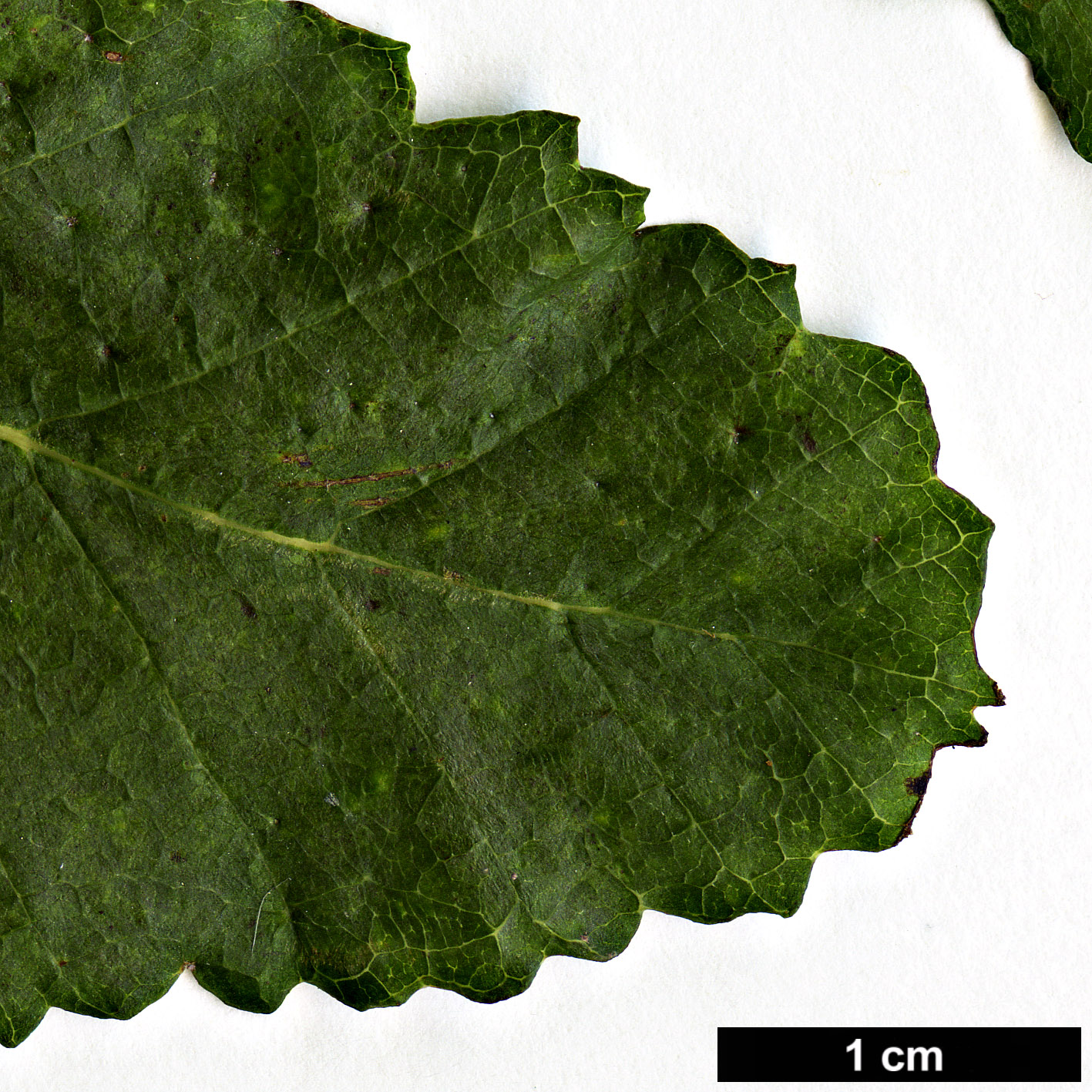Nothofagus × dodecaphleps
Sponsor
Kindly sponsored by
Col. Giles Crisp
Credits
Owen Johnson (2020)
Recommended citation
Johnson, O. (2020), 'Nothofagus × dodecaphleps' from the website Trees and Shrubs Online (treesandshrubsonline.
Genus
- Nothofagus
- N. alpina × N. obliqua
Synonyms
- Lophozonia × dodecaphleps (Mike L. Grant & E. J. Clement) Heenan & Smissen
- Nothofagus × alpina (Ørst.) hort.
Other taxa in genus
- Nothofagus alessandrii
- Nothofagus alpina
- Nothofagus antarctica
- Nothofagus betuloides
- Nothofagus × blairii
- Nothofagus cliffortioides
- Nothofagus cunninghamii
- Nothofagus dombeyi
- Nothofagus fusca
- Nothofagus glauca
- Nothofagus gunnii
- Nothofagus × leonii
- Nothofagus macrocarpa
- Nothofagus menziesii
- Nothofagus menziesii × obliqua
- Nothofagus moorei
- Nothofagus nitida
- Nothofagus obliqua
- Nothofagus pumilio
- Nothofagus solandri
- Nothofagus truncata
A tree potentially to 40 m, with an almost straight trunk. Bark grey with some reddish tinges, smooth and with horizontal bands of lenticels for c. 10 years and then cracking into predominantly vertical plates, less closely than N. alpina but more regularly than N. obliqua. Young twigs grey-brown, slightly pubescent, slender (c. 1.5 mm thick); buds conic, c. 7 mm long. Leaves rather oblong, 3 – 10 × 2 – 4 cm, tapering to a rounded tip, and mostly rounded (often asymmetrically) at the base; margins slightly double-toothed; main veins usually in 10 – 14 conspicuous pairs (cf. 8 – 9 pairs typical for N. obliqua and 14 – 18 for N. alpina); petiole c. 4 mm, slightly pubescent. Cupule with lamellae 1 – 4 mm long, sparsely glandular; fruits likely to be less than 5 mm long.
Distribution Argentina Potentially near the Chilean border, where the parents' distributions overlap. Chile Potentially, wherever the parents' distributions overlap.
Habitat Mountain forests
USDA Hardiness Zone 7-8
RHS Hardiness Rating H5
Conservation status Not evaluated (NE)
The obscurity of Nothofagus × dodecaphleps is partly a consequence of the nomenclatural confusion surrounding its parent the Rauli (N. alpina q.v.). Van Steenis (van Steenis 1953) recommended that the name N. × alpina should be used for trees of hybrid origin, but suggested that the other parent was N. pumilio; N. pumilio is in another Section of the genus and the existence of such a hybrid still seems unproven. His name, however, was informally adopted from the 1960s to describe trees in cultivation in England which were known to be hybrids between Rauli and N. obliqua. In 2004, Grant and Clement (Grant & Clement 2004) suggested that the name N. alpina should be reserved for the Rauli (syn. N. nervosa, N. procera), showing that the type specimen was not of hybrid origin, and they gave the hybrid with N. obliqua its current and somewhat ferocious name, which should probably be accented on the second syllable and is a corruption of the classical Greek dodeca phlebes (with 12 veins); unusually, the holotype for a taxon which is assumed to occur in the wild is from the cultivated tree at Alice Holt in England (see below).
As hybrids seem to occur frequently when the parents are grown together in the UK, it seems reasonable to assume that they should also be part of the wild Nothofagus population, though little research seems to have been conducted; in their study of the parent species and their varieties Vazquez & Rodriguez (1999) make no reference to hybrids. The existence further north of N. macrocarpa, with its various intermediate features, might also seem to complicate the identification of wild crosses; its fruit tends to be very slightly larger than that of either of the parents of N. × dodecaphleps, and its leaves seldom have more than 10 pairs of lateral veins.
Obvious hybrids were first noted by a nursery worker in a bed of seedlings raised from a plot of Rauli in the National Pinetum at Bedgebury in Kent, England, which was very near a plot of N. obliqua (Clarke 1988). The larger of two of these seedlings, planted near Palmer Ride in the Westonbirt National Arboretum in Gloucestershire in 1963, was 25 m × 76 cm dbh in 2014 (Tree Register 2020), while the sister-tree, planted in the same year at Alice Holt Lodge in Hampshire, was 20 m × 72 cm dbh in 2012 (Tree Register 2020). Mature trees at Glen Helen on the Isle of Man and at the John F. Kennedy Arboretum in Co Wexford, Ireland, may be from the same source (Tree Register 2020), though a few others seem more likely to have occurred independently. One such, planted as recently as 1994 at Tregrehan in Cornwall, had reached 18 m by 2014 (Tree Register 2020). These are handsome trees, with an apparently very good survival rate, though they could possibly be viewed as diluting the distinctive ornamental features of either parent.






